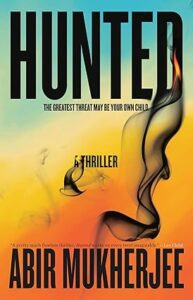
On November 6, 1860, Abraham Lincoln emerged as the unexpected winner in a closely contested presidential election. The nation was deeply divided, with Southern extremists on the brink of dismantling the Union, as state after state seceded, leaving Lincoln powerless to prevent it. While slavery was a central issue, the North and South’s animosities converged on a single focal point: Fort Sumter, a lonely federal fortress in Charleston Harbor.
Erik Larson, a master storyteller, delves into the tumultuous months between Lincoln’s election and the Confederate attack on Sumter. This period was characterized by tragic mistakes, miscommunications, inflated egos, and selfish ambitions, as well as personal tragedies and betrayals. Lincoln himself admitted that the challenges of these five months were so immense that had he foreseen them, he would not have believed survival possible.
Central to Larson’s narrative are key figures like Major Robert Anderson, commander of Fort Sumter and a former slave owner with sympathies for the South but a strong loyalty to the Union. There is also Edmund Ruffin, a radical secessionist who fueled the flames of rebellion, and Mary Boykin Chesnut, the conflicted wife of a plantation owner who grappled with the complexities of marriage and slavery, seeing parallels between the two.
Amidst all this turmoil is Lincoln, overwhelmed and surrounded by conflicting advice, particularly from his duplicitous secretary of state, William Seward. Lincoln desperately tries to prevent the inevitable war that he fears will claim the lives of hundreds of thousands of Americans.
Larson paints a vivid picture of this period using diaries, confidential messages, slave records, and plantation documents. His narrative serves as a chilling reminder that cataclysms are often not recognized until it is too late, capturing the political horror story that led America to the brink of civil war.
DOWNLOAD
**Exploring the Historical Turmoil in Erik Larson’s “The Demon of Unrest”**
Erik Larson, known for his compelling narratives of historical events, dives deep into the chaos and turmoil of a pivotal moment in American history in his latest book, “The Demon of Unrest.” This work takes readers on a gripping journey through the tense months between Abraham Lincoln’s election and the shelling of Fort Sumter, highlighting the personal and political dramas that unfolded during this critical period.
One of the central figures in Larson’s narrative is Major Robert Anderson, commander of Fort Sumter and a man torn between his Southern sympathies and his loyalty to the Union. Anderson’s struggles mirror those of many Americans at the time, caught between conflicting loyalties and uncertain futures.
Another key player in Larson’s story is Edmund Ruffin, a radical secessionist whose fiery rhetoric and actions further inflamed tensions between North and South. Ruffin’s zealotry serves as a stark reminder of the fervor that fueled the march towards civil war.
Larson also delves into the personal lives of individuals like Mary Boykin Chesnut, whose diary provides a vivid and often heartbreaking account of the era. Chesnut’s reflections on marriage, slavery, and the impending conflict offer a poignant glimpse into the complexities of life in the antebellum South.
At the center of it all is Abraham Lincoln, a man grappling with the weight of leadership as he tries to navigate the treacherous political landscape of the time. Larson paints a vivid portrait of Lincoln, highlighting his humanity, his flaws, and his unwavering commitment to preserving the Union.
Through meticulous research and evocative storytelling, Larson brings to life a momentous chapter in American history, shedding light on the personal and political struggles that shaped the nation. “The Demon of Unrest” is a powerful reminder of the fragility of democracy and the enduring relevance of history in understanding our present.




